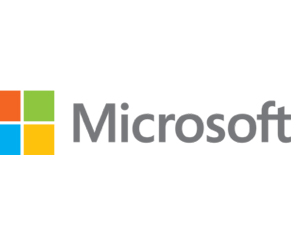Businesses have adapted to the new normal. The transition hasn’t been smooth — or easy — but they’ve managed to shift entire workforces out of the office while continuing critical operations and (mostly) maintaining pre-pandemic productivity levels.
But there’s a new challenge on the horizon: security. As organizations have expanded the scale of collaboration tools and widened the scope of user data access, complexity has concurrently increased, offering malicious actors the ideal combination of fragile defenses across fragmented infrastructure.
With threat vectors evolving and users outside the effective protections of in-office IT programs, how do companies simplify security and solve for change?
DISCOVER: Learn more about how to protect your organization in the new normal.
Why Mass Remote Is an Opportunity for Cyberthreat Actors
Change is the only constant in cybersecurity. As IT operations evolve — moving from onsite data centers to cloud stacks, mobile solutions and remote work initiatives — malicious actors are also making the shift as they look to compromise critical software and services.
Here, hackers aren’t choosy; they’ll use whatever it takes to get the job done. As noted by Forbes, present problems around password use remain a risk for organizations; if weak passwords used to access multiple applications are compromised, companies could easily find their entire remote network under threat.
Familiar phishing threats are also on the rise as attackers leverage the stress felt by socially distant employees to bypass their natural concern about supposedly urgent email. In fact, the rate of phishing attacks on North American organizations rose by more than 66 percent in the first quarter of 2020.
The widespread adoption of virtual private networks has also led to a shift in cybercriminal behavior, with attackers now seeking out weak VPNs and using publicly known vulnerabilities to gain access.
While this combination of past, present and potential attack vectors isn’t news to IT security teams, the arm’s-length application of security controls introduces a new level of complexity and concern.
Microsoft 365 Makes Security Simple
The Microsoft 365 Security Center is designed to help organizations that operate Windows environments to manage and secure Microsoft identities, data, devices, apps and infrastructure at scale. Essential features of the Security Center include:
- At-a-glance overview of corporate security health from the application’s Home page that includes device compliance, detected malware and identity protection data
- Alert reporting across the entire Microsoft 365 environment, including Office 365 Advanced Threat Protection, Azure Active Directory and Advanced Threat Protection, and Microsoft Defender
- Data classification for documents, email and websites to help ensure the right users have the right access to the right resources at a distance
- Role-based permissions for granular control over content viewing and task completion to limit total risk
Microsoft 365 Provides Holistic View of Cybersecurity
In addition to simplifying current security practices, Microsoft 365 also helps organizations unify observations to proactively prevent malicious attacks.
For example, the Incidents Queue allows IT teams to examine and prioritize security issues to connect the dots on key threat vectors and deploy an effective response. Repeated attacks on VPN access points, for example, may suggest an inherent operational vulnerability and allow teams to prioritize critical security updates.
MORE FROM BIZTECH: How to keep your video meetings secure.
The Microsoft 365 Compliance Center, meanwhile, provides key data about the current state of IT compliance and suggests potential remediations. Full visibility into compliance concerns offers the dual benefit of detecting common threat vectors and deploying solutions that avoid the secondary problem of regulatory failures and potential fines.
And in May, Microsoft activated new Threat Protection capabilities in Security Center that include centralized incident response solutions that can self-heal specific assets and provide proactive threat hunting based on custom-created detection and response rules.
Delivering Cyberdefense In Remote-Work Environments
Solid security in remote-first conditions is challenging from a purely technical standpoint, but when combined with staff stress and service complexity across expanding IT environments, it’s the perfect storm for hackers. Existing password issues can be leveraged for broad network access, while familiar phishing attacks offer increased chance of success, and new VPN vectors come with the potential for unexpected breaches behind supposedly secure lines.
Defense at a distance demands the deployment of security solutions capable of simplifying operations and unifying observations to empower IT action; the Microsoft 365 Security Center delivers both with unified data sources for threat detection and on-demand insight for proactive incident prevention.
Brought to you by:













